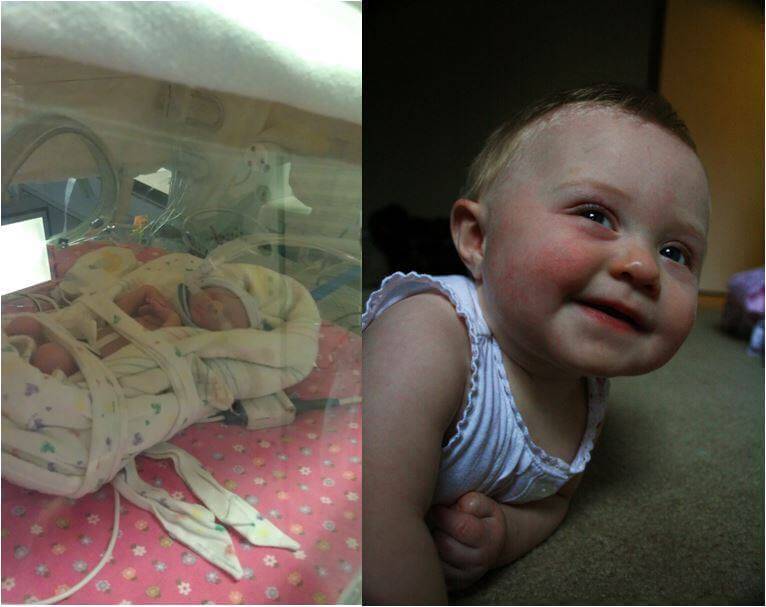
Preeclampsia & Premature Birth: A Mother’s Perspective
Preeclampsia, eclampsia, pregnancy induced hypertension (PIH), and toxemia (outdated term) are all terms related to devastating complications of pregnancy that can be life-threatening. They are also terms that I was completely unfamiliar with as I moved…
Preeclampsia, eclampsia, pregnancy induced hypertension (PIH), and toxemia (outdated term) are all terms related to devastating complications of pregnancy that can be life-threatening. They are also terms that I was completely unfamiliar with as I moved from the first trimester into the second. Pregnant with my first child, I moved from week-to-week counting down the days until I got to meet the tiny human I was growing inside me. Unfortunately, nothing could prepare me for the way that my body would betray me, or how the risk factors associated with preeclampsia would change the course of my entire life.
Pregnancy Concerns
Every pregnant mother has concerns about her health and that of her baby. When I was pregnant with my daughter, I did everything by “the book”. I watched my weight and eating habits, exercised as recommended, and stayed away from anything that could be dangerous to me or my child. I attended all of my prenatal appointments, and followed my doctor’s directions to the letter. Throughout the first and second trimesters I felt great. As I neared the third trimester, I started to feel the effects of pregnancy a bit more, but overall I felt healthy, and was excited about the next few months.
June 1, 2012 was a day that I will never forget. I felt sick that day, but attributed the nausea and flushed appearance to changes in my pregnancy. In my mind, I was pregnant and thus, would feel bad from time-to-time. I had a doctor’s appointment that day, and my husband made sure that I went, even though I was tired and just wanted to sleep. He saved my life.
•When The Fear Took Over…
After taking the usual urine and blood sample, and checking my vitals, my doctor came into the room with a concerned look. She told me that my blood pressure was excessively high, and that the lab work had come back abnormal. Further, measurements of my daughter indicated that she was underweight, and that my placenta was not providing enough nutrients to support healthy growth. In short – we would be delivering early and I needed to start a series of steroid shots immediately. I was 30-weeks into the pregnancy, but my daughter was only 27-weeks developed.
My husband and I went across the street to the hospital and checked into the labor and delivery unit to do more tests and start steroid shots. I will never forget the next few hours. I was told to change into a gown and leave a urine sample in the bathroom. When I came out, my doctor was there again, and this time, there were two nurses. As I was re-positioned on the prenatal monitors, my doctor came and held my hand. She told me that I had preeclampsia and that my placenta was poisoning my body. I would be having a cesarean (c-section) immediately. The only cure for preeclampsia is delivering the baby and administering treatment. A nurse also informed me that I was experiencing contractions, even though I could barely feel them. I started to cry. I had no idea that I was at risk for preeclampsia. My daughter was too early. What was going on?
Labor and Delivery Problems
Within the next hour, I was being wheeled into the operating room. My blood pressure was at stroke level, and my kidneys and liver were compromised and failing rapidly. My daughter was beginning to distress, so we moved quickly. The epidural did not hurt, the c-section was an incredible experience as I lay there awake knowing that my body was being opened. In what seemed like seconds, I heard a small cry, and my husband’s face carried a look of both joy and concern. My daughter was tiny. She was only 2 pounds, 2 ounces at birth, and looked nothing like what I imagined she would. She was a reddish-pink bundle of pure energy. She actually looked quite angry that we removed her from my warmth.
Post-Delivery: The Emotional Roller-Coaster
After closing the c-section, my husband and daughter were moved from the room. My daughter was going to the Neonatal Intensive Care Unit (NICU), and my husband would re-join me in the recovery room shortly. Alone, I lay there trying to stay calm, but aware that my journey toward motherhood was not yet over. I was taken to the recovery room, and was told that my husband was making phone calls. I had no idea who would be coming, or if I would even remember later. A nurse came into the recovery room and told me that I had five minutes to visit with family before I would be given a treatment of magnesium sulfate, which would help prevent stroke or seizures, which are common with advancing preeclampsia. Once I was given the treatment, I would be, for all practical purposes, in a medical induced coma.
•Deep, Calm Breaths…
When I was allowed to have visitors, I remember the relief of seeing my dad, my mother-in-law, my best friend, and even my brother-in-law who was still in full police uniform. The support of my family was tremendous. After the five minutes passed, everyone was ushered out except my husband. As he and I had a moment of time alone, he offered encouragement that our daughter was in good hands, and was as healthy as she could be under the circumstances. That is the last thing I remember as the nurse administered the magnesium sulfate. The world went hazy, voices were muffled, and I felt like I could not move any part of my body.
The next two days were spent in the high-risk maternity unit with tubes and medications. I vaguely remember hearing doctors come in and talk with my husband about our daughter. I was not allowed to see her, could not breastfeed or cuddle her, could not eat, and was a prisoner of my own body rejecting my pregnancy. Sleep was fitful and the medications produced a series of night terrors.
Life in the NICU: Heart-Wrenching Moments
After three days, I was finally allowed to visit my daughter in the NICU. NICU can be a scary place. There are lots of incubators and cribs, machines that beep and buzz, and there are always a variety of healthcare providers moving from station-to-station. Seeing my tiny daughter in an incubator, hooked up to monitors and oxygen was more than I could bear. I broke down and cried openly. I was horrified and worried, anxious and completely overwhelmed.
•So Close, Yet So Far – The Reality of a NICU Stay
While NICU can be scary and confusing, the staff therein can also be tremendous support for parents. Building relationships with NICU staff is important, especially if parents are released from the hospital before the child, as was the case in our story. When my husband and I returned home and our daughter remained in NICU, we relied on several telephone calls per day, as well as daily visits to the NICU to begin the bonding process with our daughter. The social worker in the NICU helped me set up and adjust to being a mother in an unconventional situation, and the nurses were always willing to listen to concerns.
•The Calm After the Storm: Reassurances & Love
As my daughter’s health stabilized, my husband and I were able to begin changing her diapers and helping bathe her, and I was even allowed to try breastfeeding. Due to my health, breastfeeding was not a viable option for us, so we utilized a donor breast milk program through the NICU so that our daughter would have every advantage of nutrition. I learned quickly that asking questions and being directly involved in the NICU process is really important. There was no judgment when I was unsure of what to do, or how to handle something. The nurses offered every support, even hugs when needed, and rejoiced with us as our daughter was finally able to breathe on her own, could drink from a bottle, and began having bowel movements regularly – things most of us take for granted.
In general, I felt like I had failed my daughter. My body rejected her, then almost poisoned her, then refused to cooperate so that I could feed her and bond with her. The time in NICU was a time that now seems almost as if a haze or bad dream. After 45 days, my husband and I were finally relieved and overwhelmed that our tiny 4-pound bundle was coming home. There was no “nesting”, and we could not have parties to celebrate her arrival. Life in our home for those first several weeks was very much like life in the NICU – sterile and quiet.
Final Thoughts on Preeclampsia
I truly believe that I would not be on this Earth if it were not for my husband and doctor. Later, I found out that my health had declined to such a point that my daughter would not have survived another 24-hours, and I would have been in a coma in another 48-hours at most. I am eternally grateful for my doctor, who recognized the complications and took immediate action. I am also happy to report that now, six years later, my daughter is happy and healthy.
I have been part of several support groups for mothers who have experienced preeclampsia, eclampsia, or similar complications of pregnancy and I have seen how devastating the consequences can be. I know several women who have lost children, or whose children have suffered injury or disability due to preeclampsia or premature birth. While preeclampsia affects only 2-8 percent of all pregnancies, the consequences can be traumatic and life-altering for parents and the child.
In my case, and many others I have become familiar with, conditions like preeclampsia require immediate recognition and treatment in order to save lives. I have heard many stories of women whose doctors did not recognize the symptoms of preeclampisa, and treatment was delayed. In some cases, the baby was delivered with little or no complications. In other cases, however, the baby did not survive. In all of these cases, the family involved was left with grief and many questions.
Anyone who has experienced the devastation of misdiagnosis or delayed diagnosis should contact a medical malpractice attorney to learn more about their situation. As patients, we have the right to quality care that preserves life. If you believe that your rights have been violated, contact MedMalFirm.com to learn more.
